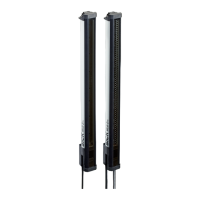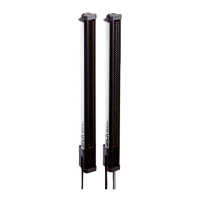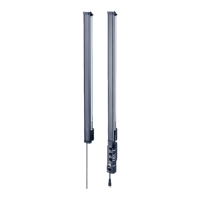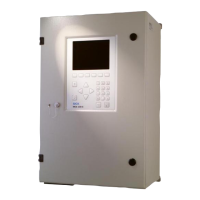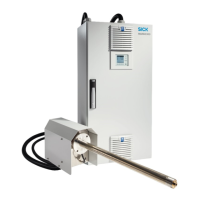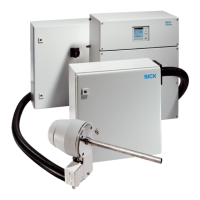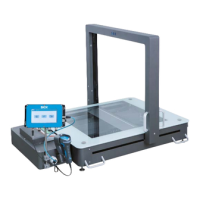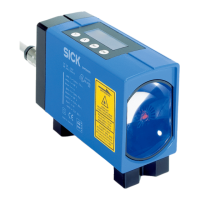Figure 12: Cross-beam function
A minimum dist
ance between the sender and the receiver is required for the cross-
beam function. The minimum detectable object size depends on the position of the
object within the detection area. Detection of the smaller minimum detectable object
size is therefore only possible in the central area (b) of the detection area.
•
The cross-beam function is only useful for object detection (NBB ≤ 1). For other
applications (height classification, object recognition, etc.), the results of the paral‐
lel-beam function are used.
•
Use of the cross-beam function increases the response time.
•
With the cross-beam function, a minimum distance needs to be maintained
between sender and receiver. The minimum distance depends on the aperture
angle of the light grid.
•
For moving objects for the cross-beam function, the minimum detectable object
depends on the speed of the object.
Table 13: Minimum detectable object during MLG-2 Prime cross-beam function
Beam separa‐
tion
Minimum dis‐
tance
5-m v
ariant
Minimum dis‐
tance
8.5-m variant
Minimum detectable object
(stationary object)
In area B In area A
5 mm 110 mm 120 mm 6.5 mm 9 mm
10 mm 220 mm 240 mm 9 mm 14 mm
20 mm 440 mm 480 mm 14 mm 24 mm
25 mm 550 mm 600 mm 16.5 mm 29 mm
30 mm 660 mm 720 mm 19 mm 34 mm
50 mm 1,110 mm 1200 mm 29 mm 54 mm
3.7 Operating reserve
The operating reserve defines the operational safety before contamination, vibrations,
misali
gnment, temperature fluctuations, etc. cause the MLG-2 to produce incorrect
measurements.
The MLG-2 is subject to a certain level of contamination depending on its environment
and application. In principle, the MLG-2 must be cleaned regularly and a teach-in
should be carried out after cleaning.
PRODUCT DESCRIPTION 3
8018715.16YM / 2020-02-13 | SICK O P E R A T I N G I N S T R U C T I O N S | MLG-2 Prime
21
Subject to change without notice

